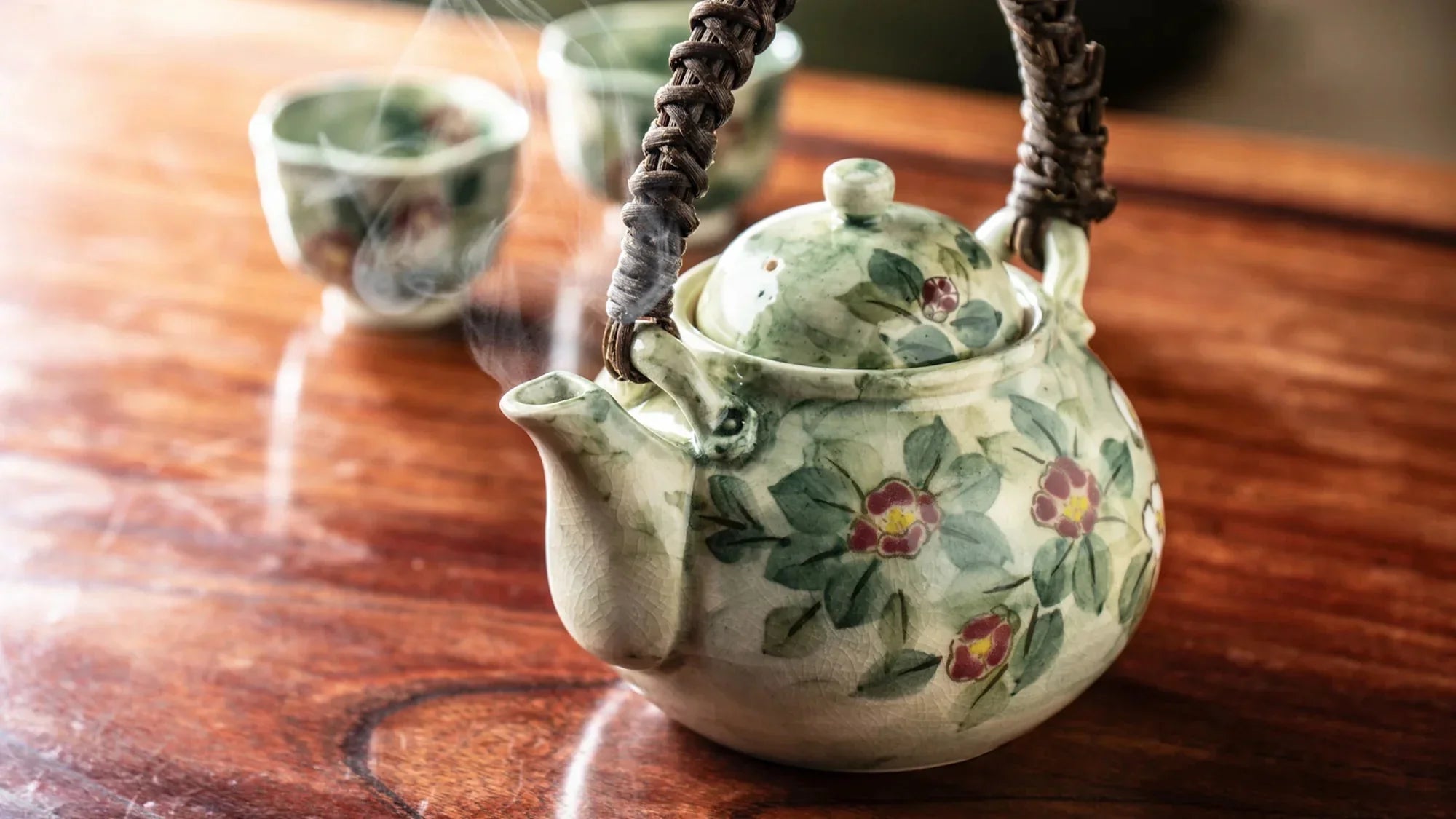
Tosen Kiln: Kyoto's Ceramic Heritage and Future
Written by Team MUSUBI
Step into the storied world of Kyoto's ceramic artistry with the esteemed Tosen Kiln. Founded in 1868, Tosen Kiln serves as a beacon to the harmonious fusion of time-honored traditions and contemporary innovations. Through the discerning eyes of master artist Taniguchi, readers will traverse a landscape of evolving designs, collaborative ventures, and contemplative reflections on Kyoto's dynamic artisanal shifts. This feature implores us to appreciate the delicate balance between tradition and innovation, urging a renewed commitment to safeguarding Kyoto's rich ceramic heritage. An enlightening journey awaits.
tables of contents
About Tosen Kiln

Evolution of Floral Designs at Tosen Kiln: The Camellia and Tokusa Inspirations
Adorning the Camellia Flowers

The Camellia design, passionately adored by Taniguchi, evolved naturally in his artistic journey. Starting with a singular camellia on a plate, he refined the design over time. The leaves merge dark and light green shades to establish balance, while white and red dyes are used for the petals, providing them a unique, raised, and glossy finish that contrasts the watercolor-esque hue of the leaves. Expert painters with a background in Japanese style painting bring these designs to life.
Taniguchi experiments with various layouts, sometimes letting the camellias frame the food on the plate's edge, or placing a single flower in the center as a post-meal reveal. Occasionally, the designs even grace the inner surface of cups, countering the white interior's simplicity.
The Tokusa Motif, Red and Blue

Creativity and Collaboration in a Changing World

Reflecting on the past, Taniguchi recalls a time when artisans could afford moments of leisure—times when the day's tasks ended early, allowing them to muse over and experiment with novel designs. Contrasting this with today's demanding culture, he notes the diminishing spaces for artisans to truly explore their creativity, as they grapple with meeting quotas and optimizing efficiency—a shift he finds deeply regrettable.
The Fading Mentorship: Taniguchi Reflects on Kyoto's Changing Artisan Landscape

Unfortunately, many of these esteemed establishments are either closing down or no longer maintain their influential standing. The diminishing proactive guidance from dealers has left the newer generation of artisans to navigate their craft largely in isolation, often leading to an excessively individualistic approach.
Taniguchi stresses the need for not only artisans, but also the arts and craft dealers, to re-embrace their pivotal roles, moving beyond transient trends and short-term gains, and nurturing the tradition of mentorship once more.
Preserving Kyoto's Ceramic Legacy
"Crafting with the traditional clay of Kiyomizu Ware, I apply glazes that complement this heritage material. My creations honor our legacy, bearing designs that resonate with the contemporary era."
The story of Tosen Kiln, along with the indomitable spirit of Taniguchi, mirrors the extensive ceramic legacy of Kyoto, which is characterized by dedication, innovation, and collaboration. As we find ourselves at the crossroads of tradition and contemporary demands, acknowledging the invaluable role of mentorship and community is increasingly crucial to ensure the sustainability of this ancient craft.
Taniguchi's journey is not simply a testament to his artistic mastery, but also a call to preserve the collective wisdom and the nurturing environments of yesteryears. Let us honor and hold dear the intricate interplay between artisan and merchant, creativity and critique, tradition and innovation, as we endeavor to maintain Kyoto's respected ceramic heritage for future generations.







Leave a comment
This site is protected by hCaptcha and the hCaptcha Privacy Policy and Terms of Service apply.